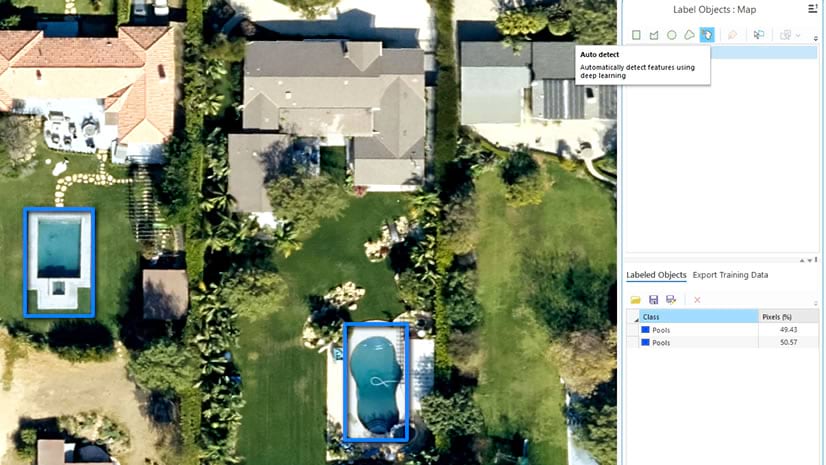
The latest ArcGIS Pro version brings exciting advancements in GeoAI for imagery. Discover the top features we’ve added to enhance your workflow.
Expanded support for external training data
The Train Deep Learning Model tool now offers flexibility in training data sources for object detection. Besides the data from the Export Training Data For Deep Learning tool, it can now use external data in Pascal Visual Object Classes or KITTI rectangles formats. Just organize the data into images and labels folders. This update makes the tool compatible with numerous open-source and commercial software tools that generate training data differently, thus enhancing its versatility and efficiency.

Enhanced AI-assisted labeling
The AI-assisted labeling experience has been enhanced by removing anomalies in the detections, as well as being able to automatically label image collections. By turning on the Remove Anomalies option in the AI- assisted labeling properties, the tool now automates the process of removing most, if not all, of the false positive detections.
Support for new foundation models
ClimaX is a Vision Transformer (ViT) based deep learning model that uses diverse datasets that cover various weather variables across different spatial and temporal resolutions. This foundational model can be fine-tuned for a broad range of climate and weather applications, including tasks involving atmospheric variables and spatio-temporal details not encountered during the pretraining phase.


Prithvi-100m is a cutting-edge temporal ViT, now accessible as a foundation model within ArcGIS Pro. It is trained on extensive Harmonized Landsat and Sentinel-2 (HLS) data. This model employs a self-supervised encoder built upon a ViT architecture and Masked AutoEncoder (MAE) learning paradigm. The model incorporates both spatial and temporal attention mechanisms to effectively process and analyze image data.


Object detection on oriented imagery
Detecting features with oriented imagery data has been a challenge using deep learning. Now the Detect Object Using Deep Learning tool has been enhanced to accept oriented imagery datasets as input. The tool detects features within an oriented imagery dataset in pixel space and then projects them to map space.

Feature extraction more accessible
Easily extract features from imagery with the Extract Features tool, which is now accessible from the Imagery tab. This powerful tool offers a variety of ready-to-use models, options to use your own custom models, and a range of inferencing and postprocessing options for enhanced output quality.

Expand your analysis: append to existing outputs
The Detect Objects Using Deep Learning tool and the Classify Objects Using Deep Learning tool now support appending new results to existing output feature classes. This is useful when you’ve already processed one area and want to expand your analysis to adjacent regions. Simply run the tool again, and the new results will be added to the existing feature class.
Customize object detection: focus on what matters
When using the Detect Objects Using Deep Learning tool with models capable of identifying multiple object types, you can specify the exact objects of interest. This allows you to tailor the tool’s output to your needs and improve efficiency.








Article Discussion: